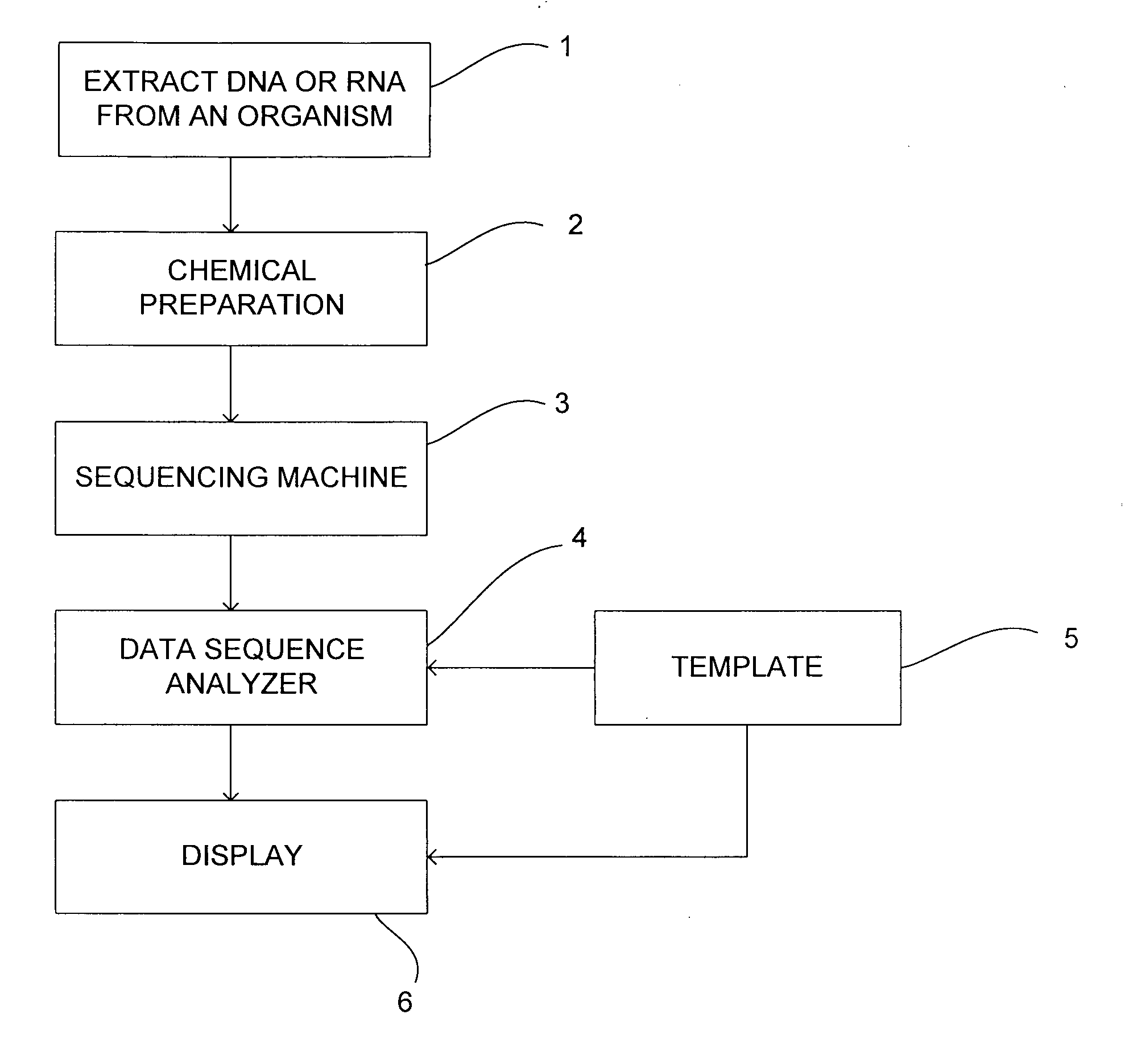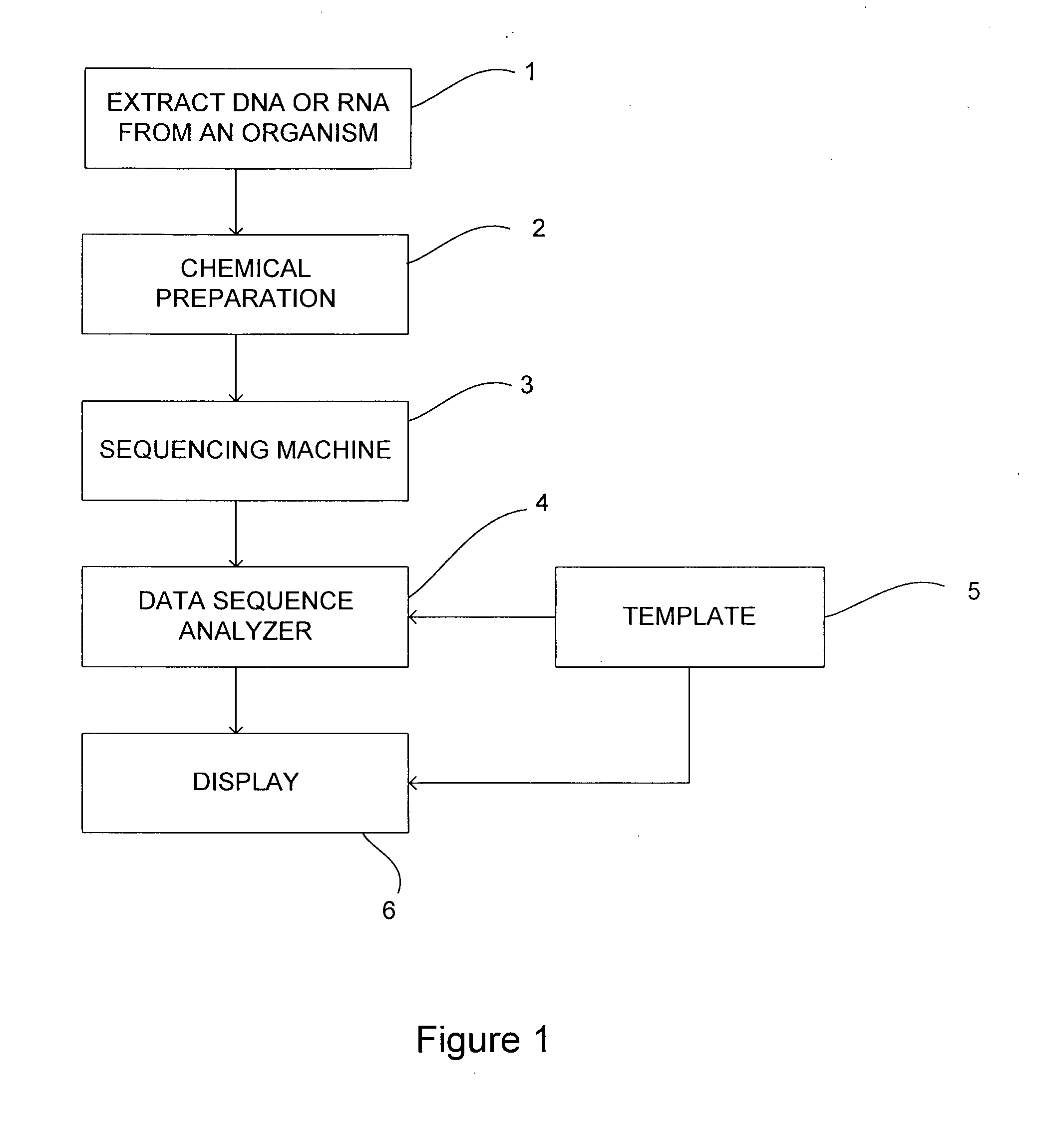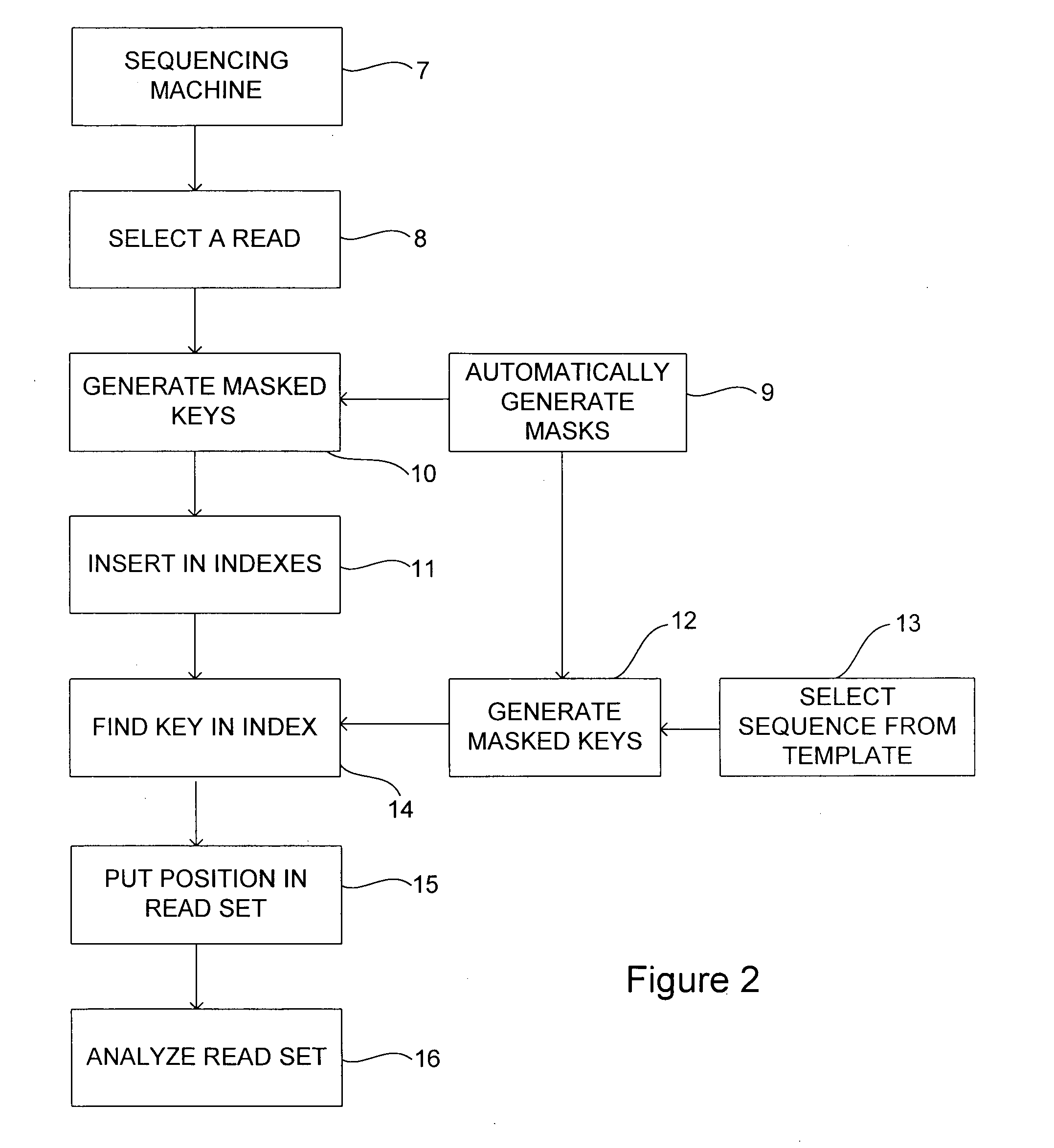Method and system for analysing data sequences
a data sequence and data technology, applied in material analysis, instruments, measurement devices, etc., can solve the problems of small errors and the long time it takes to solve existing tools
- Summary
- Abstract
- Description
- Claims
- Application Information
AI Technical Summary
Benefits of technology
Problems solved by technology
Method used
Image
Examples
example 1
Substitutions
[0111]The first example shows the process of extracting a sequence from a read and a corresponding template in the presence of two substitutions in the template sequence.
[0112]It starts at the top (line 1) with a single read of length 15. Associated with this is a single mask with 9 positions marked in the mask (indicated by an X) (see line 2). The mask is applied to the read and selects 9 nucleotides from the read (see line 3). These reads are then concatenated to form the extracted sequence (see line 4).
[0113]The template is given on line 7. It is at least as long as the read. At two positions there has been a substitution in the template, these are marked with an S and the use of a lower case letter to indicate the substituted nucleotide. Line 6 shows the same mask as on line 2. This is used to mask the template (line 5) and when these nucleotides are concatenated they lead to the same extracted sequence as that from the read (line 4).
[0114]The extracted sequence can...
example 2
Substitution and Indel
[0115]The second example shows the process of extracting a sequence from a read and a corresponding template in the presence of one substitution and one indel (an insertion) in the template sequence.
[0116]Lines 1 through 4 are the same as Example 1.
[0117]The template is given on line 7. It is at least as long as the read. At one position there has been a substitution in the template, marked with an S and the use of a lower case letter to indicate the substituted nucleotide. At another position there has been an insertion in the template, marked with an I and the use of a lower case letter to indicate the inserted nucleotide. Line 6 shows an indel mask associated with the mask on line 2.
[0118]This is used to mask the template (line 5) and when these nucleotides are concatenated they lead to the same extracted sequence as that from the read (line 4).
[0119]The extracted sequence can be used to generate an index key value and thus to associate the position in the t...
example 3
Mask Set
[0120]The first example of a mask set shows ten masks that together are able to correctly find all reads of length 15 with up to two substitutions. They may be able to correctly map with more substitutions but are not guaranteed to do so. Also they may be able to correctly map with some indels but are not guaranteed to do so.
PUM
| Property | Measurement | Unit |
|---|---|---|
| threshold score | aaaaa | aaaaa |
| threshold number | aaaaa | aaaaa |
| threshold value | aaaaa | aaaaa |
Abstract
Description
Claims
Application Information
 Login to View More
Login to View More - R&D
- Intellectual Property
- Life Sciences
- Materials
- Tech Scout
- Unparalleled Data Quality
- Higher Quality Content
- 60% Fewer Hallucinations
Browse by: Latest US Patents, China's latest patents, Technical Efficacy Thesaurus, Application Domain, Technology Topic, Popular Technical Reports.
© 2025 PatSnap. All rights reserved.Legal|Privacy policy|Modern Slavery Act Transparency Statement|Sitemap|About US| Contact US: help@patsnap.com



